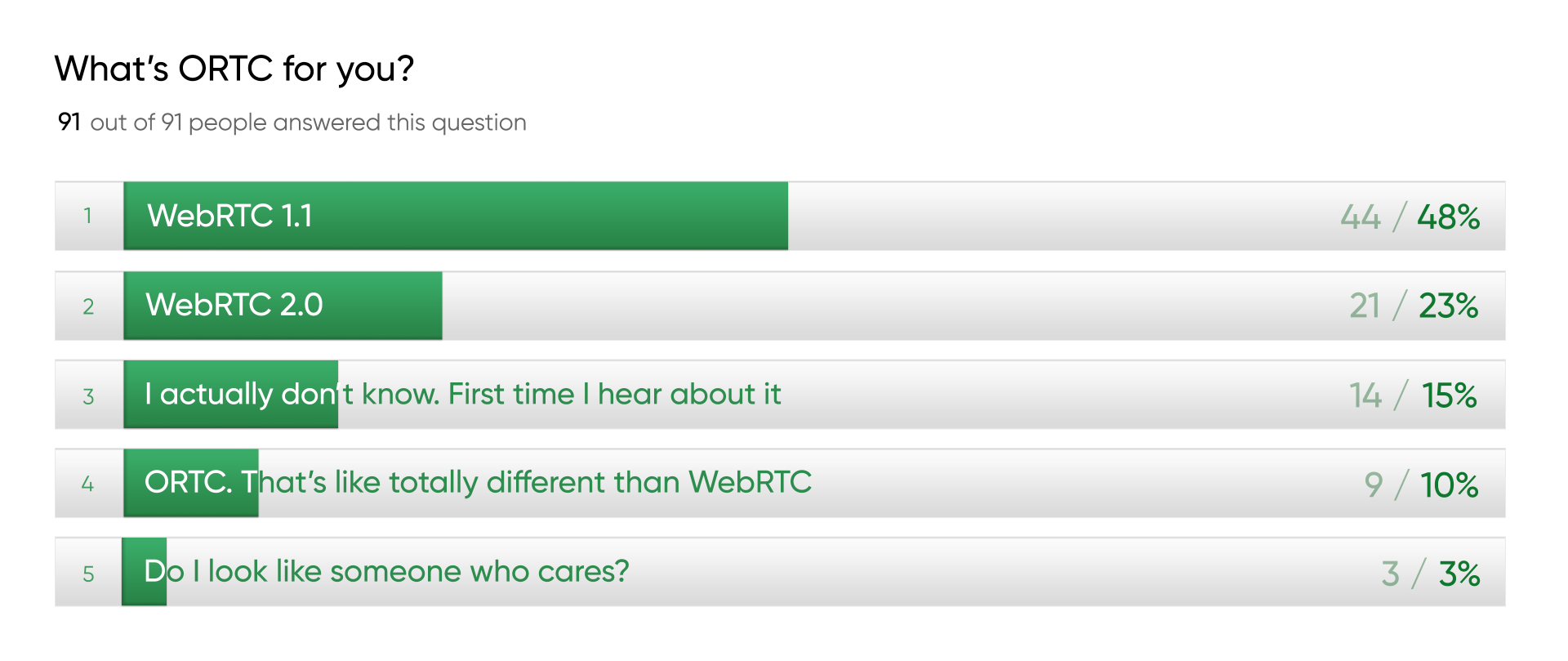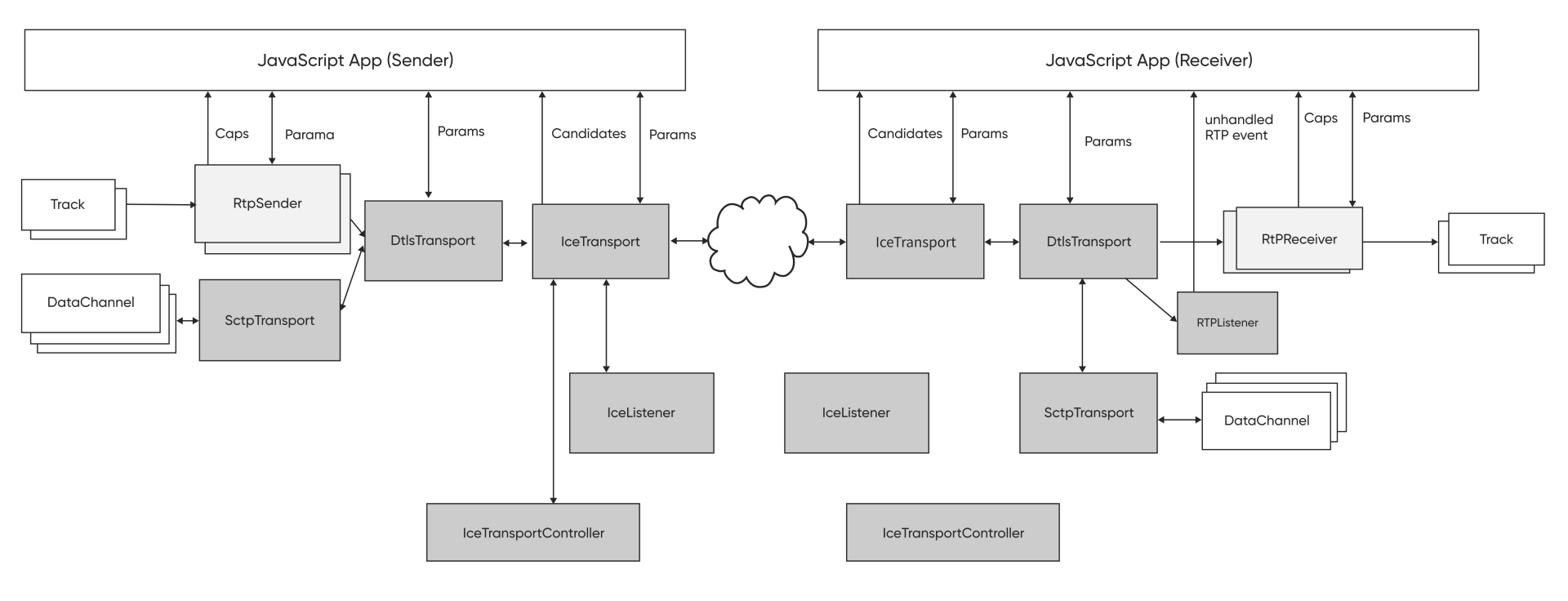We set VoLTE and RCS side by side in comparison with WebRTC previously, and we bring in the discussion of ORTC vs WebRTC for another round in the ring.
Their relation is intrinsic, and they might not even be competitors, but we believe in the value of juxtaposing them for clarity.
What is ORTC?
ORTC refers to Object-Real Time Communications.
It is a free, open project

In a flash survey done by Tsahi Levent-Levi, the perception of ORTC is a huge toss-up. It is known as WebRTC 1.1 or 2.0 to some, while others think it is entirely different from WebRTC.
Unfortunately, the haze has thickened, and for good reason.
Will Google allow ORTC to replace WebRTC 1.0 as a 1.1 or a huge jump to 2.0? It seems like a naming issue and it has not progressed to being a separate RTC API so devs are given a wide berth for the confusion.
How is ORTC used?
It is currently being shipped in the new Microsoft browser, Edge.
The end goal of ORTC is entirely the same as WebRTC, to allow devs to build real-time communications applications and features with power and flexibility.
The major objects for ORTC below are used for encoding, encryption, and NAT/FW Traversal settings.
RTCSender
DtlsTransport
ICETransport
RTCReceiver

The main difference with ORTC is that it uses separate send and receive objects, with support for simulcast and layered video coding. Also, it might be an easier fit for devs using legacy systems.
Who is involved in ORTC?
A misconception is that ORTC is a Microsoft initiative.
The ORTC API was designed within the ORTC W3C Community Group originally founded by Hookflash, with Microsoft supporting and participating in refining the initiative.
Clearly, the confusion does not help.
What is WebRTC
WebRTC refers to Web Real-Time Communications.
It is a free, open technology project that solves incompatibilities between devices for real-time communications.
It has grown to be an industry and standards effort to provide both browsers and mobile applications with Real-Time Communications (RTC) capabilities such as P2P video, audio voice, and data communication via simple APIs.
As we are doing a comparison with ORTC, we will refer to it as WebRTC 1.0
How is it used?
WebRTC takes away the barriers by removing the need for a physical client for each provider and for a user ID (email address etc).
Depending on the browser and mobile platform, the major components below allow for access to camera and mic to capture media, set up voice or video calls, and allow endpoints to share data via P2P connections.
getUserMedia
RTCPeerConnection
RTCDataChannel
The popular Tango app which has 70M MAUs, also has a free calling feature called Tango Out, with WebRTC powering their App-App and App-PSTN calls for all their users.
ORTC vs WebRTC - which is better?
When it comes to ORTC vs WebRTC, both are initiatives to improve real-time communications and are still work in progress. The protocols are practically identical on the wire, with slight variations from direct control to the use of Session Description Protocol (SDP).
None of them will claim to be a finished product. SDP is being improved at the moment, and there are also ORTC API elements in the chrome source code, but we will have to wait and see how they evolve in tandem or possibly merge into one.
Takeaway
Hookflash, the company that initiated ORTC has been instrumental in making such a cross-industry collaboration happen and thankfully, there is only one winner in this game — Devs.
With more direct control for developers with a quick rate of evolution, WebRTC has the opportunity to be universally used for enabling global communications.
Overall ORTC vs WebRTC comparison
| Technology | WebRTC | ORTC |
|---|---|---|
| Definition | Web Real-Time Communications | Object-Real Time Communications |
| Protocol | Internet Protocol | Internet Protocol |
| Developed by | Open Source, Web Developer Community | Open Source, Web Developer Community |
| Created | 2011 | 2014 |
| Providers | OTT | OTT |
| Device | Platform and Device independent: Web, Mobile | Platform and Device independent: Web, Mobile |
| Signalling | Slightly Defined (SDP) | Undefined |
| Coverage | Internet Data | Internet Data |
| Media | H.264 AVC, Libjingle ICE, SDP defined | SVC, ORTC ICE, Simulcast, Chromium Fork |
| Advantages | Full Stack control | Multiple Media Streams, Non Telephony use cases |
| Challenges | Controls abstracted behind SDP | Media Streams Not Symmetrical |



